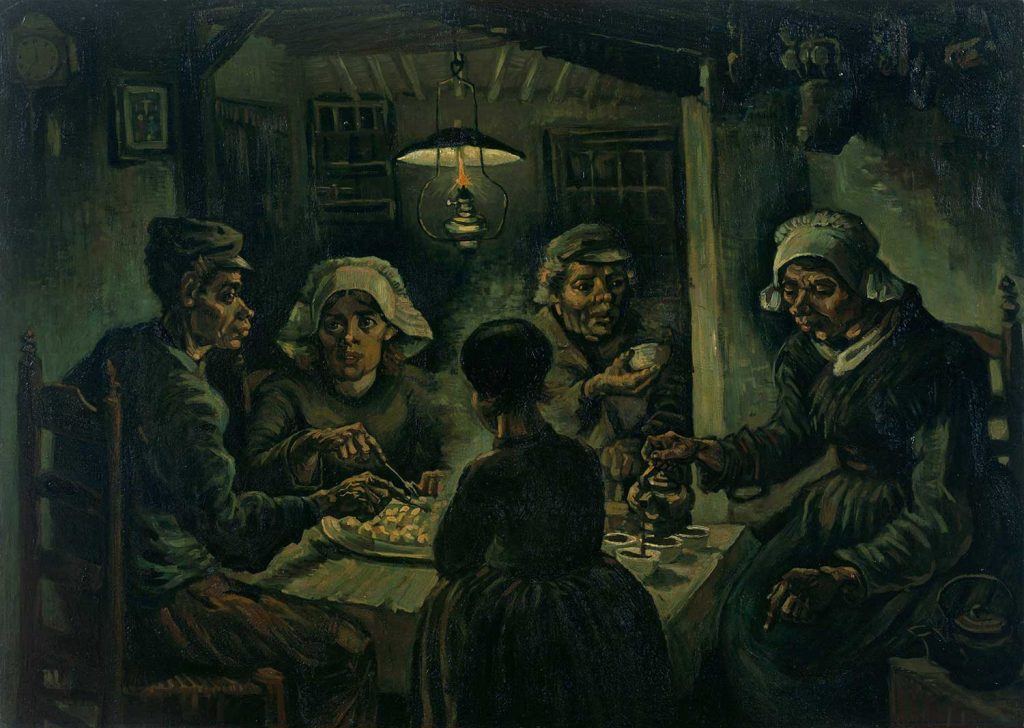
The Potato Eaters by Vincent van Gogh was created in 1885. The painting is in Van Gogh Museum Amsterdam. The size of the work is 82 x 114 cm and is made as an oil on canvas.
Van Gogh saw the Potato Eaters as a showpiece, for which he deliberately chose a difficult composition to prove he was on his way to becoming a good figure painter. The painting had to depict the harsh reality of country life, so he gave the peasants coarse faces and bony, working hands. He wanted to show in this way that they ‘have tilled the earth themselves with these hands they are putting in the dish … that they have thus honestly earned their food’. (Find more in Van Gogh Museum Amsterdam)
About the Artist: Dutch Post-Impressionist painter Vincent van Gogh was born in Groot-Zundert. Van Gogh was a serious and thoughtful child. His interest in art began at a young age. Constant Cornelis Huijsmans, who had been a successful artist in Paris, taught the students at Tilburg. His philosophy was to reject technique in favour of capturing the impressions of things, particularly nature or common objects. Van Gogh’s profound unhappiness seems to have overshadowed the lessons, which had little effect. In March 1868, he abruptly returned home. He later wrote that his youth was “austere and cold, and sterile”… Read more
You can order this work as an art print on canvas from canvastar.com

